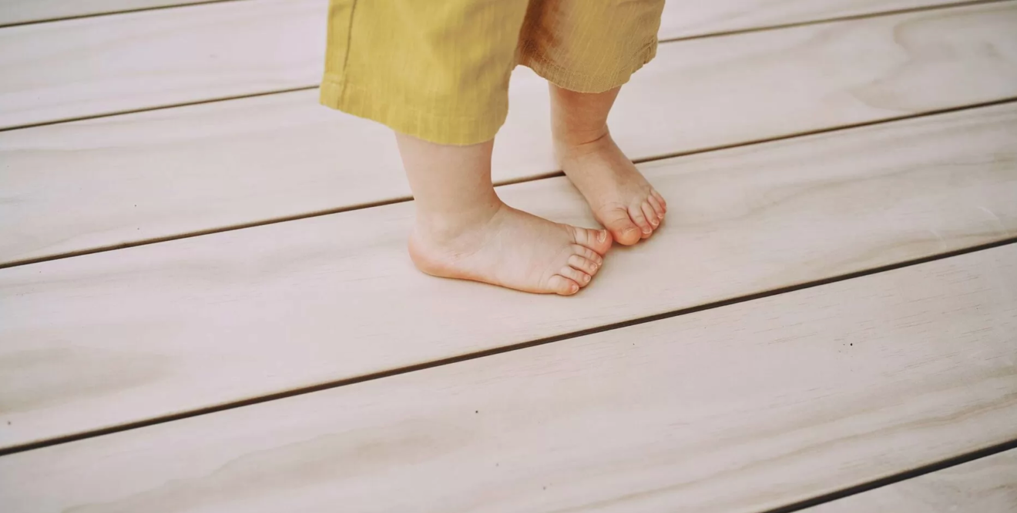
High Performance Wood: Top 5 questions about Accoya Wood
11.08.2022
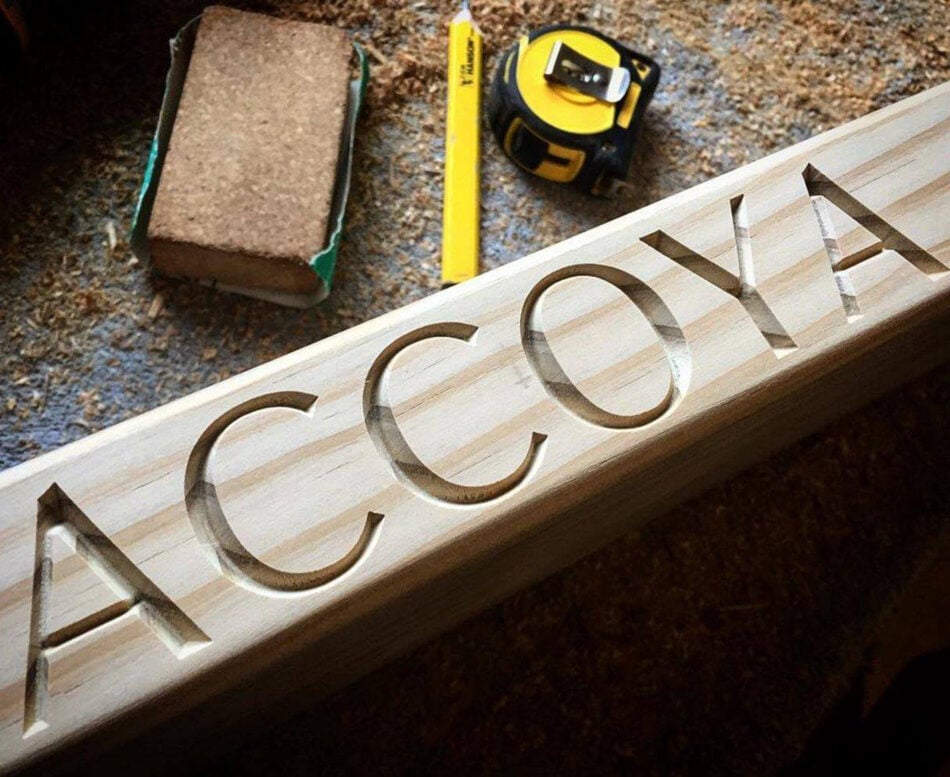
Since the Stone Age, wood has been a primary and preferred building material. Even as other materials were introduced, wood remains an essential and viable building material. Wood is also one of the most sustainable materials. Although it is susceptible to degradation if not treated to endure long-term exposure risks — like harsh climate conditions and attacks by insects and fungus — modern times have brought new and advanced technologies for wood preservation.
These advanced wood technologies are considered new to an age-old industry, many of which have been on the commercial market for the last 15 years, like Accoya high performance wood. Now, 15 years may seem like a short time, but their technology, in some cases, has been researched for more than 100 years yet only recently commercialized.
Accoya Acetylated Wood contains the same constituents as natural wood with enhanced levels. So, it is not uncommon for our team of experts to field questions regarding Accoya wood. Here, we’ve listed the top five questions and answers:
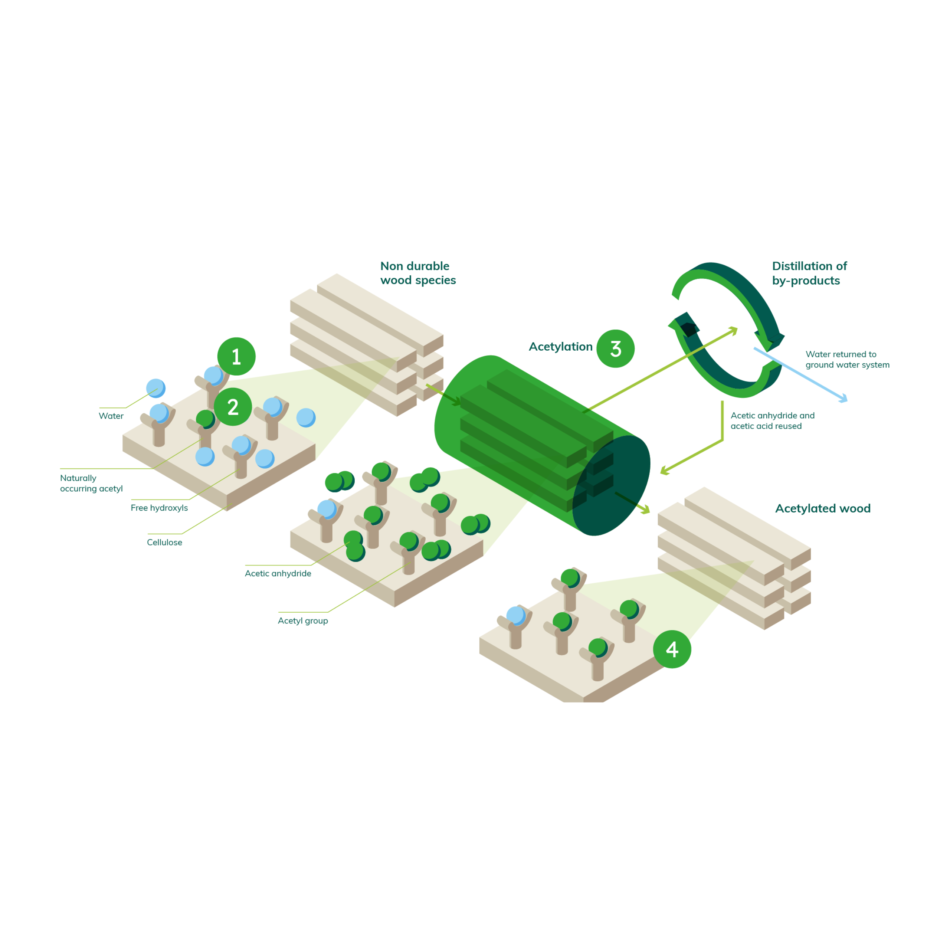
1. What is acetylation?
Wood naturally contains some acetyl groups (that repel water) and a lot of free hydroxyl groups (attract water). Hydroxyls cause wood to swell when wet and shrink when it dries, making it attractive to biological organisms (insects and fungus).
Our process uses acetic anhydride — essentially strong vinegar — to boost the wood’s acetyl content (repel water), essentially replacing the hydroxyl groups, meaning water is no longer an issue. Accoya’s shrink and swell cycle is significantly reduced thereby making it an attractive wood alternative for a variety uses. Nothing is added to the wood that wasn’t already there; we are enhancing what is already there. What’s even better? It is naturally non-toxic making it safe for families, pets, and the planet.
The byproduct of the process, acetic acid, is part of the circular economy, used in other applications, and even turned back into acetic anhydride, offering a closed loop cycle.
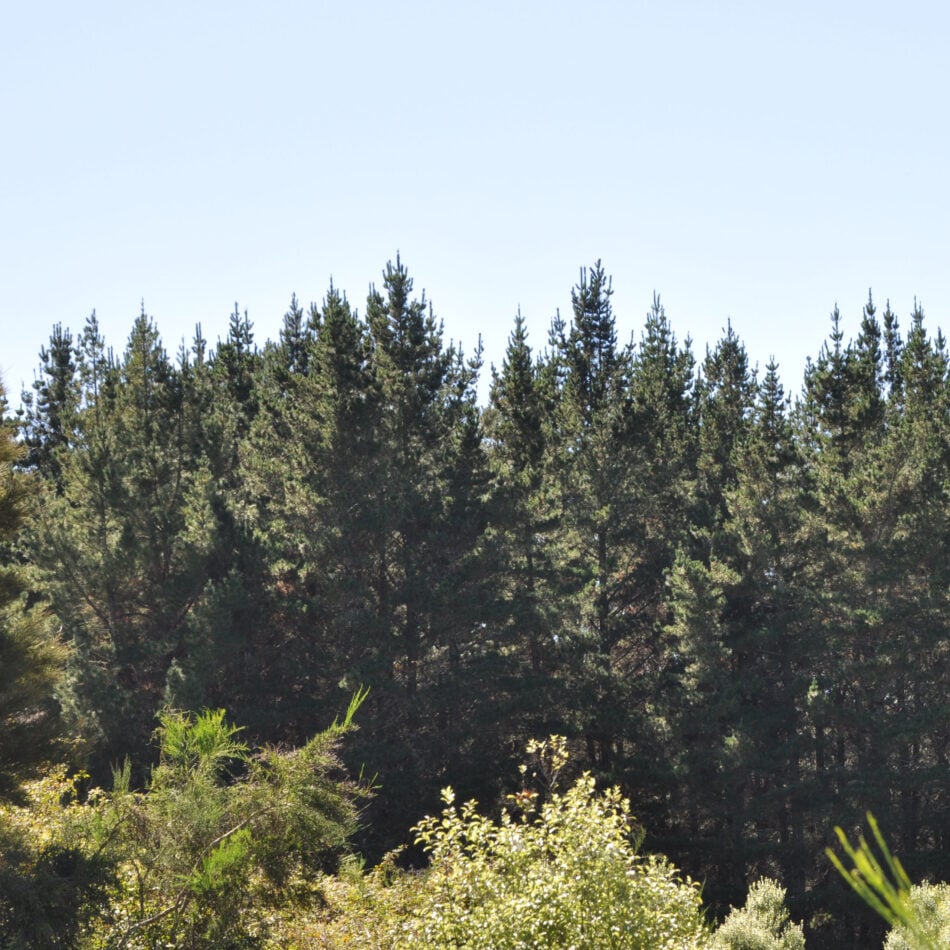
2. Is Accoya wood real wood? The short answer is yes.
Accoya wood is real wood. It is sourced from fast-growing, abundantly available, sustainably FSC certified forests that match or exceed other man-made, intensely resource-depleting, and heavy carbon-polluting alternatives. Not only that, but it is one of the few building materials awarded Cradle to Cradle Certified® Gold, meaning our supply chain, production processes, and procedures have been examined and scored highly on categories including Material Health (Platinum), Water Stewardship (Platinum), Material Reutilization (Gold), and Renewable Energy & Carbon Management (Gold), and Social Fairness (Gold). Find out more about Accoya’s sustainability credentials.
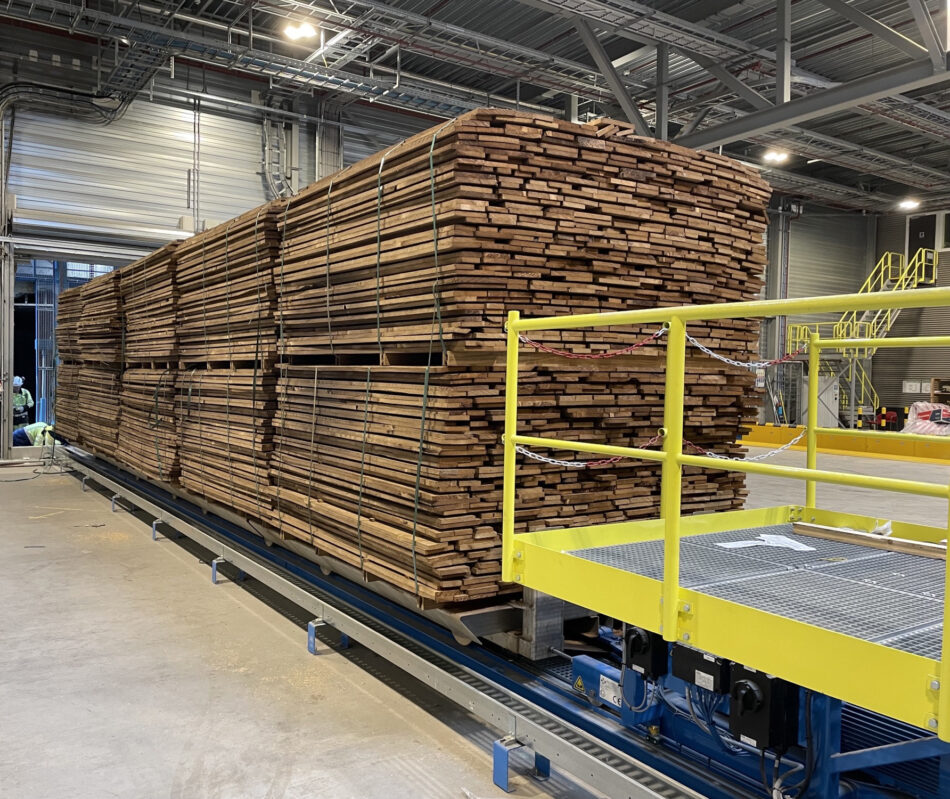
3. Where does Accoya wood come from?
Since 2007, we’ve manufactured Accoya wood from our original Arnhem, the Netherlands facility. The facility supplied the European market for several years with two reactors, and as the Accoya brand developed, it grew to four reactors to keep pace with demand. In early 2022, we announced a joint venture with Eastman Chemical to build a manufacturing facility in the U.S. The appetite for new and innovative wood technologies has created a demand for Accoya in the North American market.
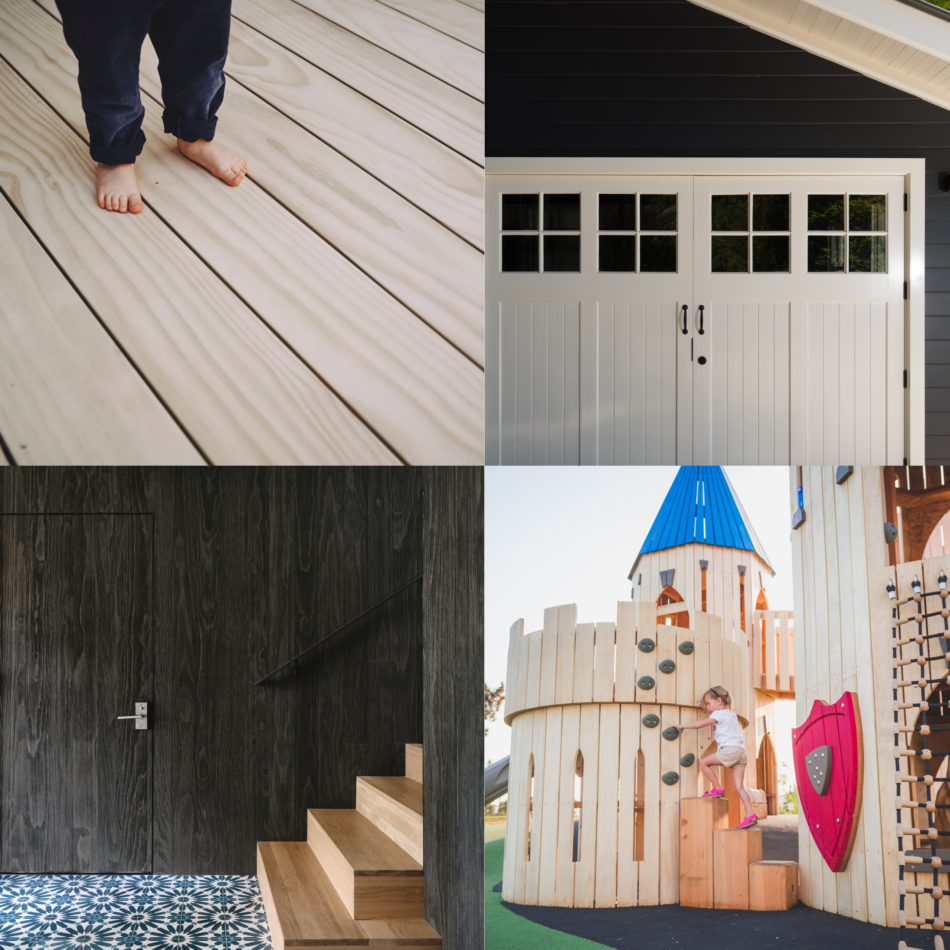
4. Where can Accoya be used?
Because of its unique properties to withstand even the harshest climates, it is widely used for exterior applications like windows (bays, casement, sash, and shutters) and doors (entry, French, bi-fold, and garage), decking (pool, rooftop, stairs), and siding. Accoya is increasing in popularity among landscape architects for use as landscape timbers, sculptures, playground structures, and furniture because it is rot and water-resistant, durable, and carries a 50-year above ground and 25-year below ground or freshwater applications. It is easy to machine, saw, plane, and sand like normal wood.
Because it is a small movement wood product (less shrink and swell), it is stable offering smaller gaps and an even surface that will stay smoother for longer than most wood products. It also remains cool in hot weather and is less prone to splinters making it an ideal wood product for decking.
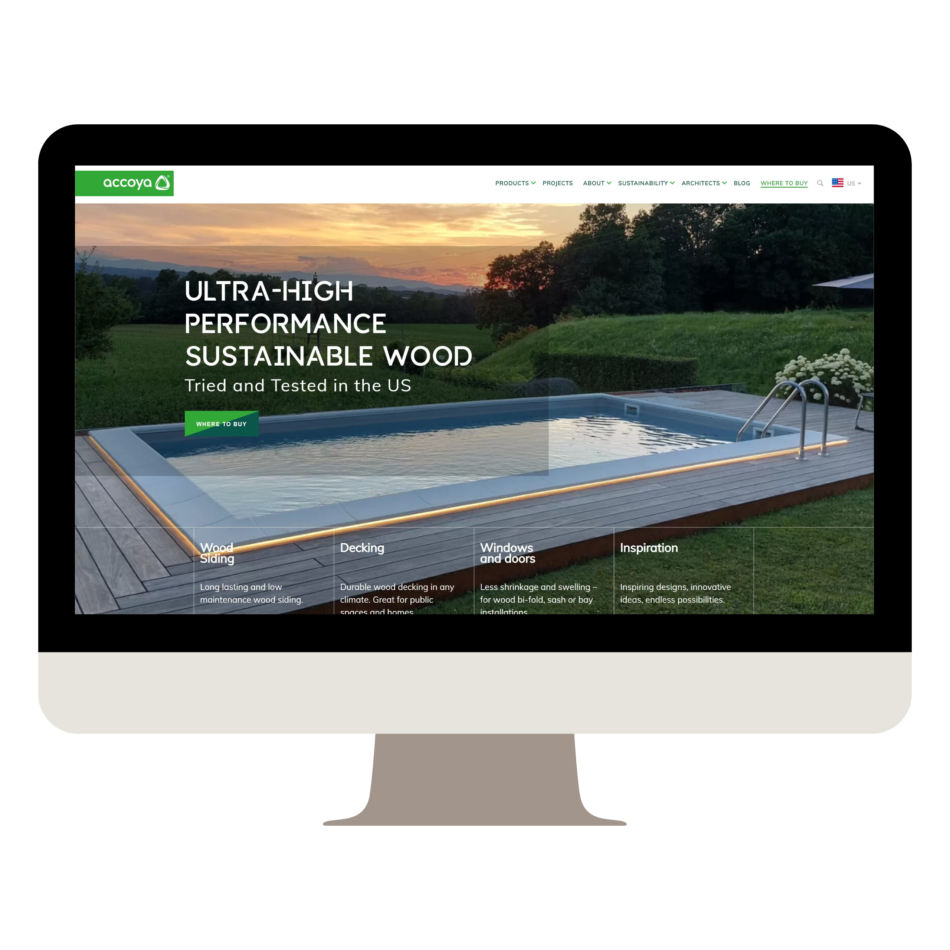
5. Where do you buy Accoya wood?
Accoya is available through a network of approved distributors across the country (and worldwide) to support the route to market that includes manufacturers of final products, woodworking professionals, suppliers, specifiers, builders, contractors, and the end-user. We also offer an Approved Manufacturer’s Program that will train professionals to use Accoya to make a finished product.
To find a distributor near you, visit our where to buy page to search.
Do you have a burning question you’d like answered about Accoya? Drop us a note, and we’ll include it in our next top questions blog.
WHERE TO BUY ACCOYA
for your next projectWhat type of Product are you interested in?
- - Select product type -
-
FIND A SUPPLIER
FIND A INSTALLER
for your next projectWhat type of are you interested in? (optional)
How will your be used?
- - Select type -
-
You are currently on the Accoya site
Would you like to visit the Accoya Site to view all relevant content for your location?